I have always been obsessed with the ancient world. It’s probably one of the reasons I love Italy so much, walking through the Colosseum, the Roman Forum and the many ancient sites of Rome for the first time is mind-blowing. To imagine people going about their day to day lives thousands of years ago, the spectacle of the gladiator shows and chariot races all on the same streets you can walk on today, the same streets walked by the likes of Julius Caesar, is something I have always found fascinating and a bit thrilling. But Italy’s history isn’t all about the Roman Empire and its legendary Emperors.
500 years before being conquered by the Romans, Sicily was colonized by the Phoenicans in the 8th century BC. Originally from what we know today as Lebanon, they had a diverse culture that blended Phoenican and Greek ideals. Their alphabet formed the basis of the Greek alphabet, and many of the Greek Gods (such as Zeus, Poseidon and Aphrodite) were versions of earlier Phoenican ones. (This was common in antiquity – for one culture to take on the Gods and traditions of another. The Romans did the same – the Greek Zeus is Romes’ Jupiter, the Greek goddess Aphrodite is Rome’s Venus.)
In the 5th century BC, the Greeks took over and conquered Sicily, further instilling Greek culture as the norm, and making it an integral part of Sicilian history. You can see all kinds of Greek influence all over Sicily (and the rest of Italy for that matter), but one very special, and must-see place is the Valley of the Temples.
The Valley of the Temples (Valle dei Templi, in Italian) is not a valley as such, but a series of temples on a ridge looking out to sea just outside the Greek colonized town of Akragas , which we now call Agrigento. It is a UNESCO site and one of the largest archeological parks in the world, containing some of the best Greek temples outside of Athens. When planning our trip to Sicily I knew I had to include a visit.
Now, I can get a little obsessed with all things ancient when we travel, I’ve taken my husband on many a visit underground, along centuries old paths, through tunnels where Emperors were assassinated, as well as many, many museums and churches. His general response when people ask him what he saw on holiday is: “lots of rocks” (he doesn’t quite share my history enthusiasm). But these are definitely more than a bunch of rocks. I mean – just look at how well preserved this temple is at a ripe old age of 2500 years!
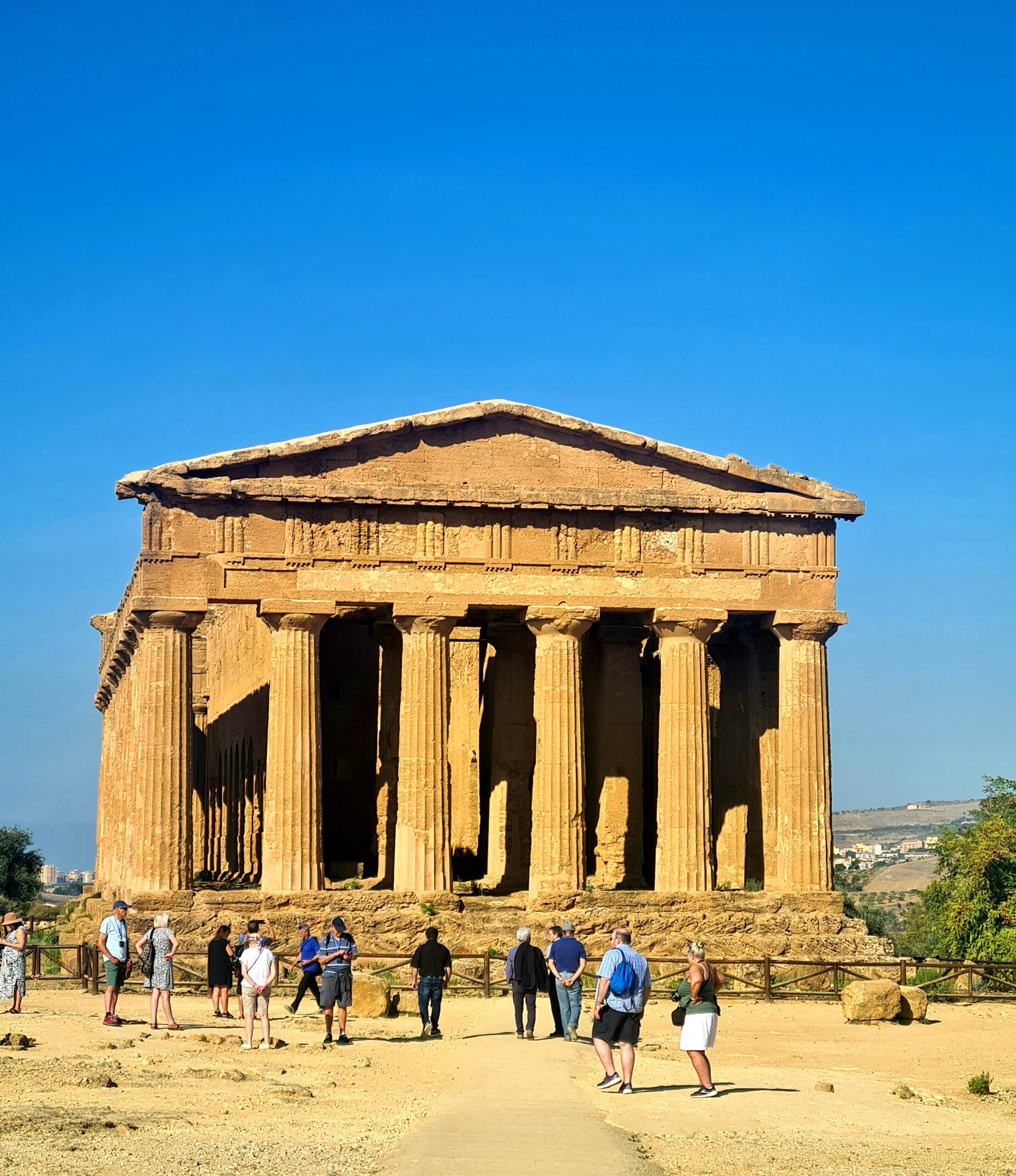
The highlight of the Valley of the Temples is the Temple of Concordia, said to be one of the most well-preserved Greek structures in the world. Just look at it! Over 2500 years old and still pretty much all in-tact. It’s difficult to describe how massive it is, such an imposing structure that is just breath-taking.

In the 5th century B.C., the temple was dedicated to the pagan goddess Concordia, goddess of harmony and unity. Once Christianity became the new religion of the Empire, places of pagan worship were destroyed (seen as blasphemous) but this temple survived because it was converted into a Christian Basilica dedicated to the apostles Peter and Paul in the 6th century.
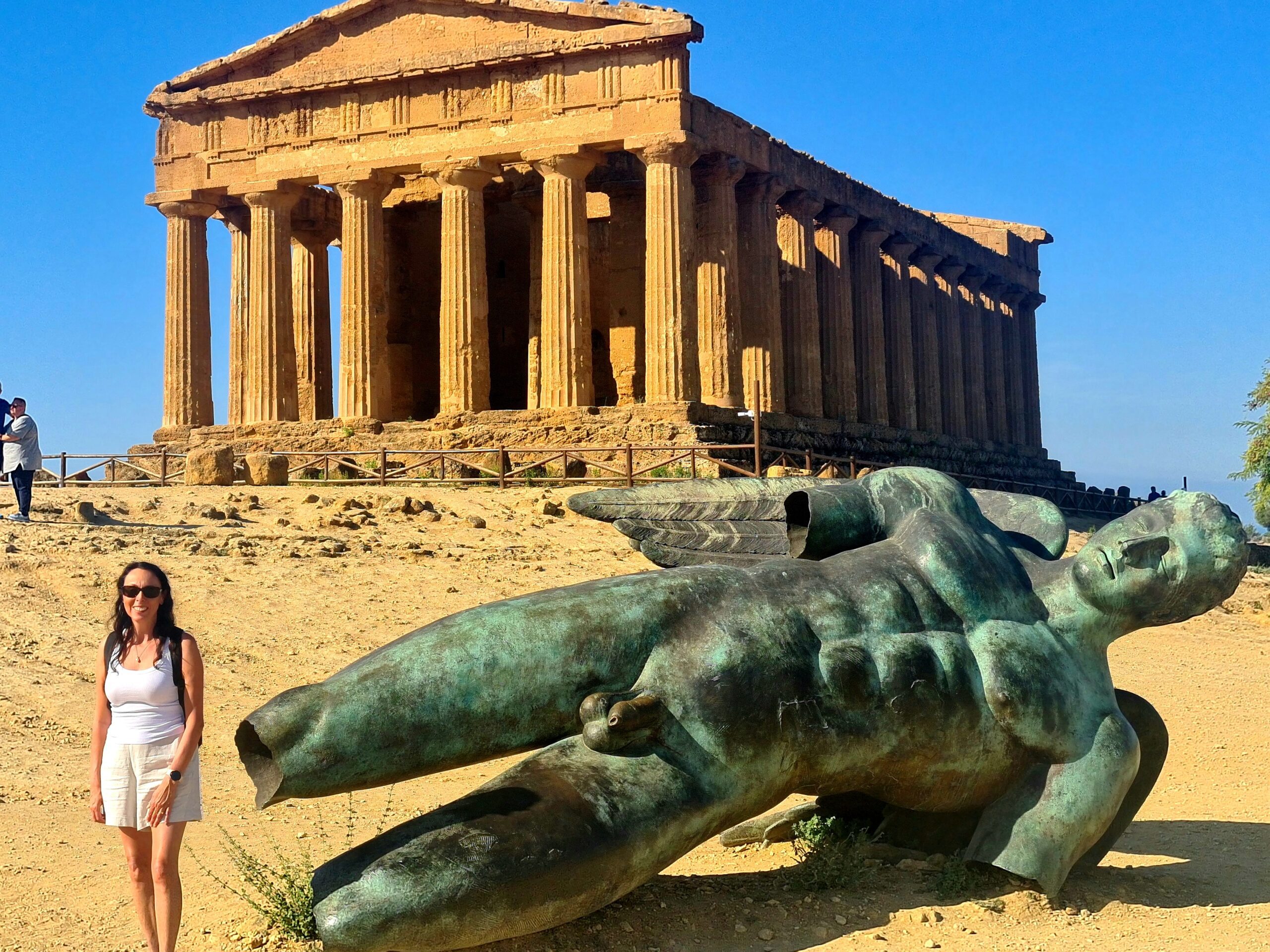
The statue lying in front of it, in case you were wondering, is meant to be the mythical Icarus, who, according to ancient myth, disobeyed his father Daedalus by flying too close to the sun while wearing wings held together with wax. They melted, resulting in him falling to his death. In Greek mythology, Daedalus was a skillful architect and craftsman. He invented the wings Icarus wore to enable himself and his son to escape the island of Crete, where they were held captive by King Minos (father of the Minotaur that lived in the Labyrinth). He had warned Icarus not to fly too close to the sun, but we all know kids end up doing the exact opposite of what we ask, so Icarus died as a result of not listening to his father (life lesson right there). A grief-stricken Daedalus ends up landing at the site of the Valley of the Temples and discovered the town of Agrigento. Don’t ask me why Icarus isn’t wearing pants (unless they also melted off) BUT I can tell you that just about everyone who stood next to him to take a photo stood at groin level with hand on his rather large…emm.. bits (not me…see).
Spread over 1300 hectares, the Valley of Temples takes some time to walk through. We visited in late September, and we were feeling the heat in the middle of the day. Sicily is warm pretty much all year round and scorching during summer! Water is a must as is comfortable shoes. We saw loads of tourists struggling and there isn’t much shade. I wouldn’t want to be there in the middle of the day during peak season. TRAVEL TIP – visit early in the morning or late in the day (it is lit up at night which would be pretty magical to see).
There are eight temples, in various states of preservation. You need a guide (download online or rent an audio guide available at the entrance) or a travel book to fully understand and appreciate all the sites. Some, admittedly, are simply piles of rubble (yes, you can imagine the commentary from my husband when we approached those ones – oh look, more rocks!) – BUT there are some incredible structures to see, as well as plenty of history to learn. Even those few that were mostly destroyed, when you knew what they had looked like, and imagined the valley with these colossal structures where people came to worship thousands of years ago, it is hard not to be in awe.
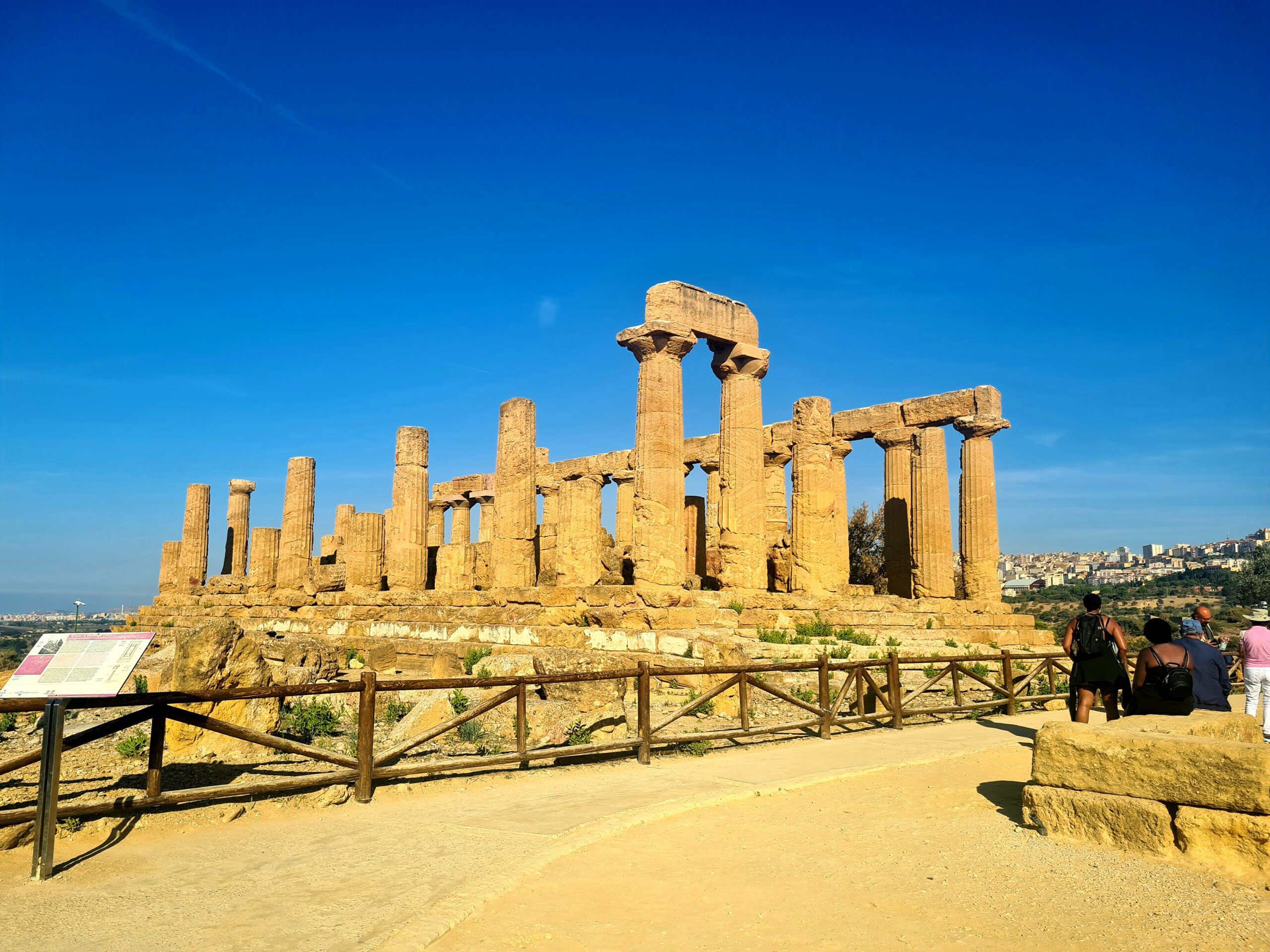

HOW TO GET THERE
You can do a day trip to the Valley of Temples from many places in Sicily, and many people visit this way. It’s a 2 hour drive from Palermo, and a little bit further from Catania so if you have a car, this could be a great idea. The train and bus from Palermo is around 2 hours, but the best way from Catania is by bus, around 2.5 to 3 hours (train service between West and East Sicily is not ideal or sometimes even an option). Many travel groups offer day trip tours, but I am not a fan of sitting on a bus for hours on a group tour to visit a popular site in the middle of the day when all the other tourists turn up at the same time. It just makes it chaotic. All these options make for a pretty long day, so staying at least one night makes for a more pleasuarble visit. I prefer to stay at least overnight near the sites I want to see, and Agrigento is only 3km away, so it is a perfect base.
We actually stayed 2 nights in Agrigento because we had just travelled 2 hours by train from Cefalu, and our next trip required an early morning bus to Catania, so I thought an overnighter would be too rushed. In hindsight, one night would have probably been enough, but Agrigento is such a beautiful and quaint little town it really is worth a stay. I always believe you experience the best of a town in Italy when you stay overnight. That’s when the locals come out and the place really reveals itself to you.
AGRIGENTO
The view of the town from the Valley of the Temples makes it look like a bit of a metropolis, and with a population of almost 60,000 people, it’s no small town.
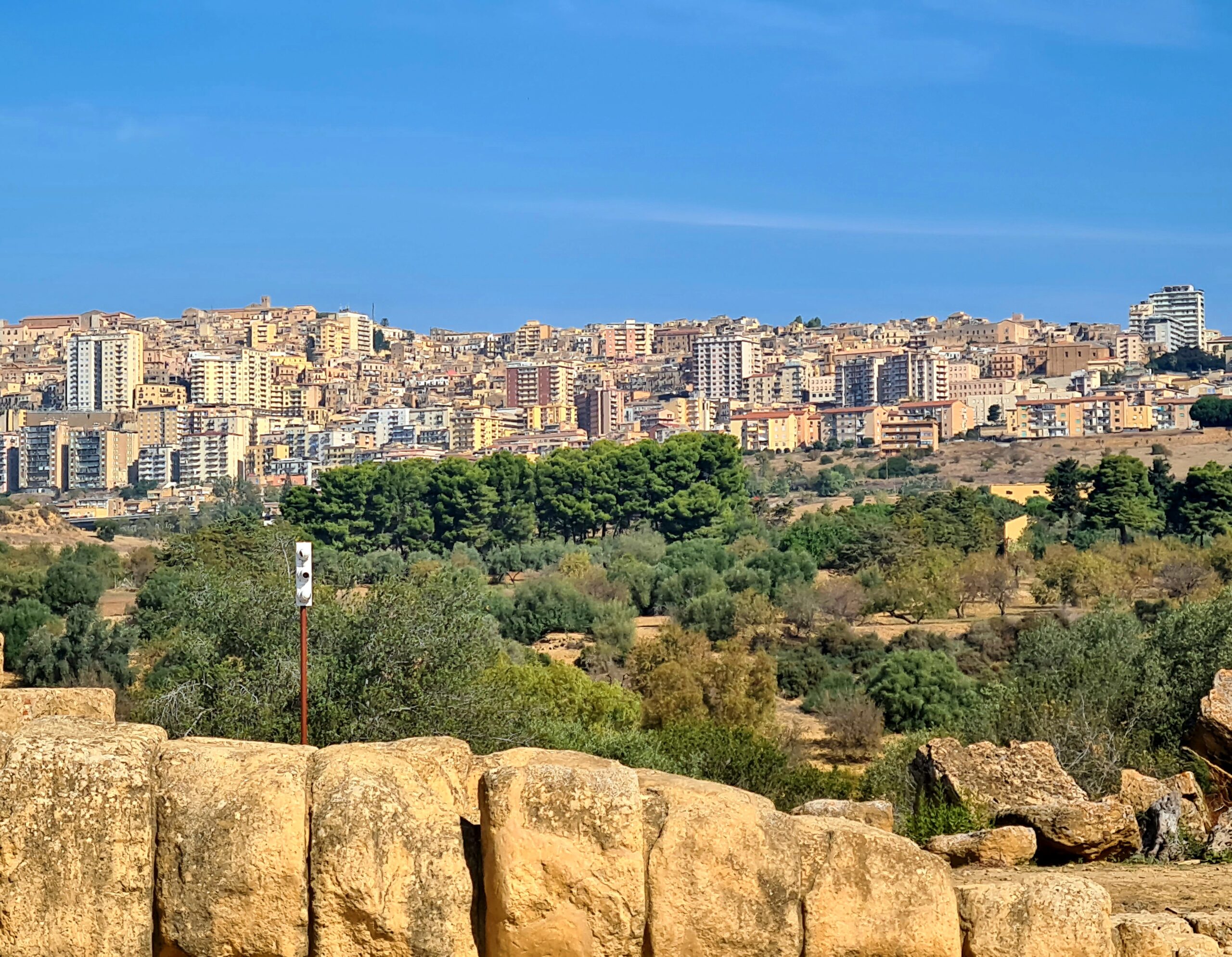
But, as with all Italian towns, the charm is in the historic centre, where the streets are relatively quiet, and much more beautiful. We stayed at Agrigento Boutique Apartments right in the historical centre. I always prefer accommodation right in the middle of town within walking distance to all the sites than paying for more modern types that may have better facilities further from the action. Our apartment had everything we needed including full kitchen and laundry, a lounge and a balcony (I’m a sucker for a room with a balcony).
Agrigento overlooks the Valley of the Temples, and proudly urges you to look out and take it all in, from the valley to the sea.
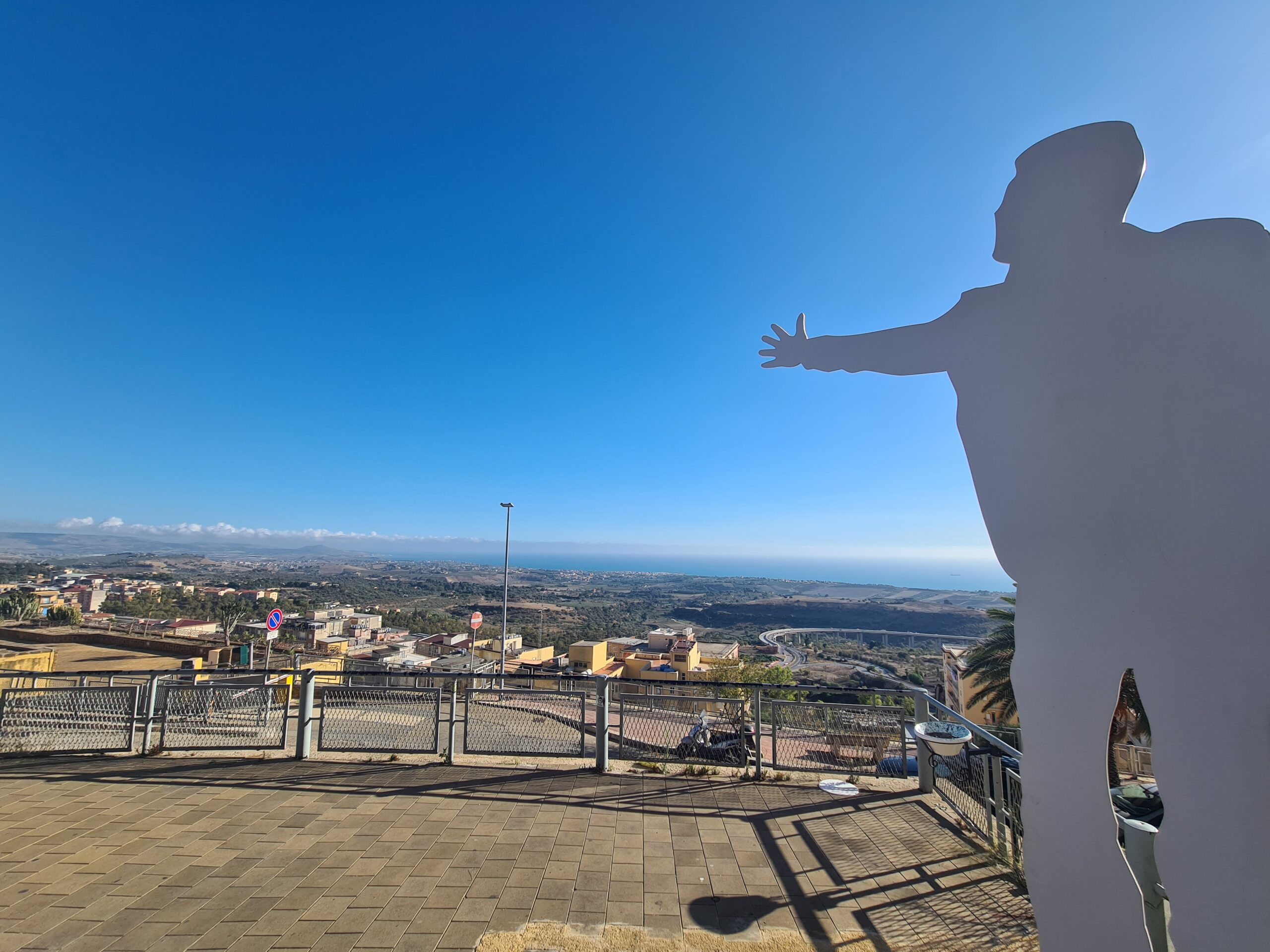 Agrigento teams with people in the middle of the day who come to see the Valley of the Temples on a day trip, but early morning and evening is when the town really shows its charm. I loved just walking around the streets, which were windy and steep, depending on which way you went. The streets were just so beautiful, quirky and arty, it really was a great place to just wander and get lost. As you can see from the pictures, not a tourist in sight!!!
Agrigento teams with people in the middle of the day who come to see the Valley of the Temples on a day trip, but early morning and evening is when the town really shows its charm. I loved just walking around the streets, which were windy and steep, depending on which way you went. The streets were just so beautiful, quirky and arty, it really was a great place to just wander and get lost. As you can see from the pictures, not a tourist in sight!!!
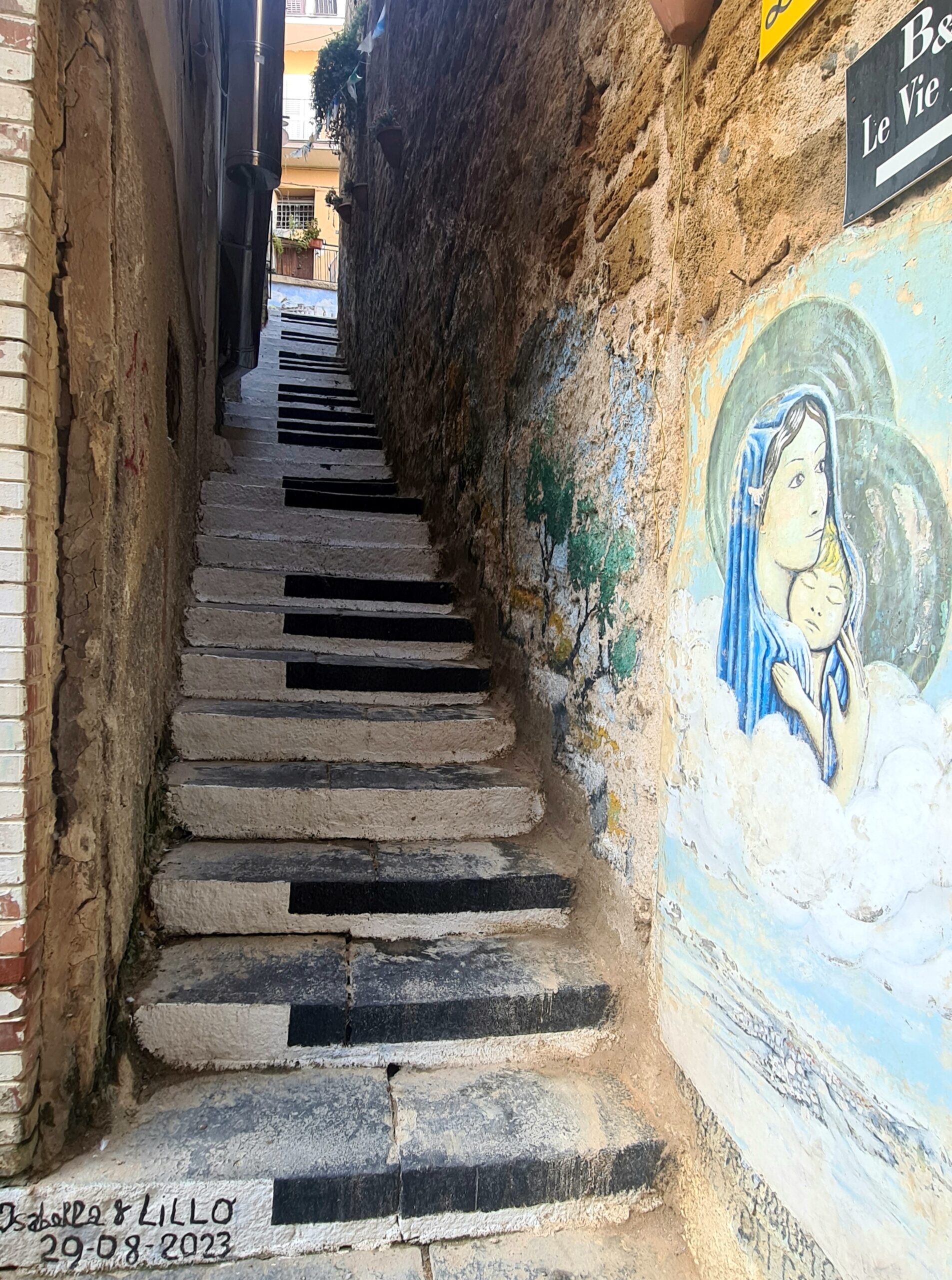
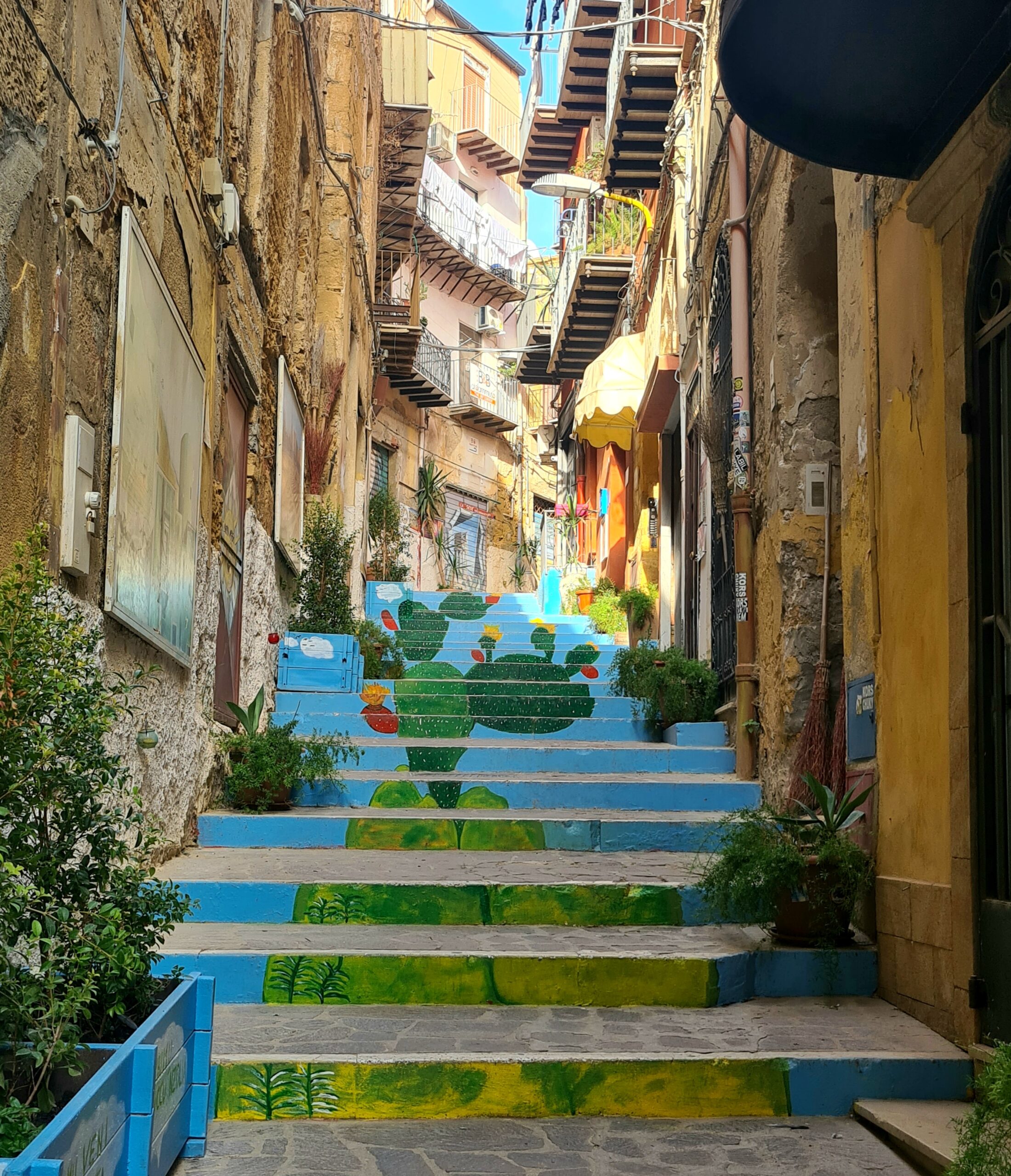
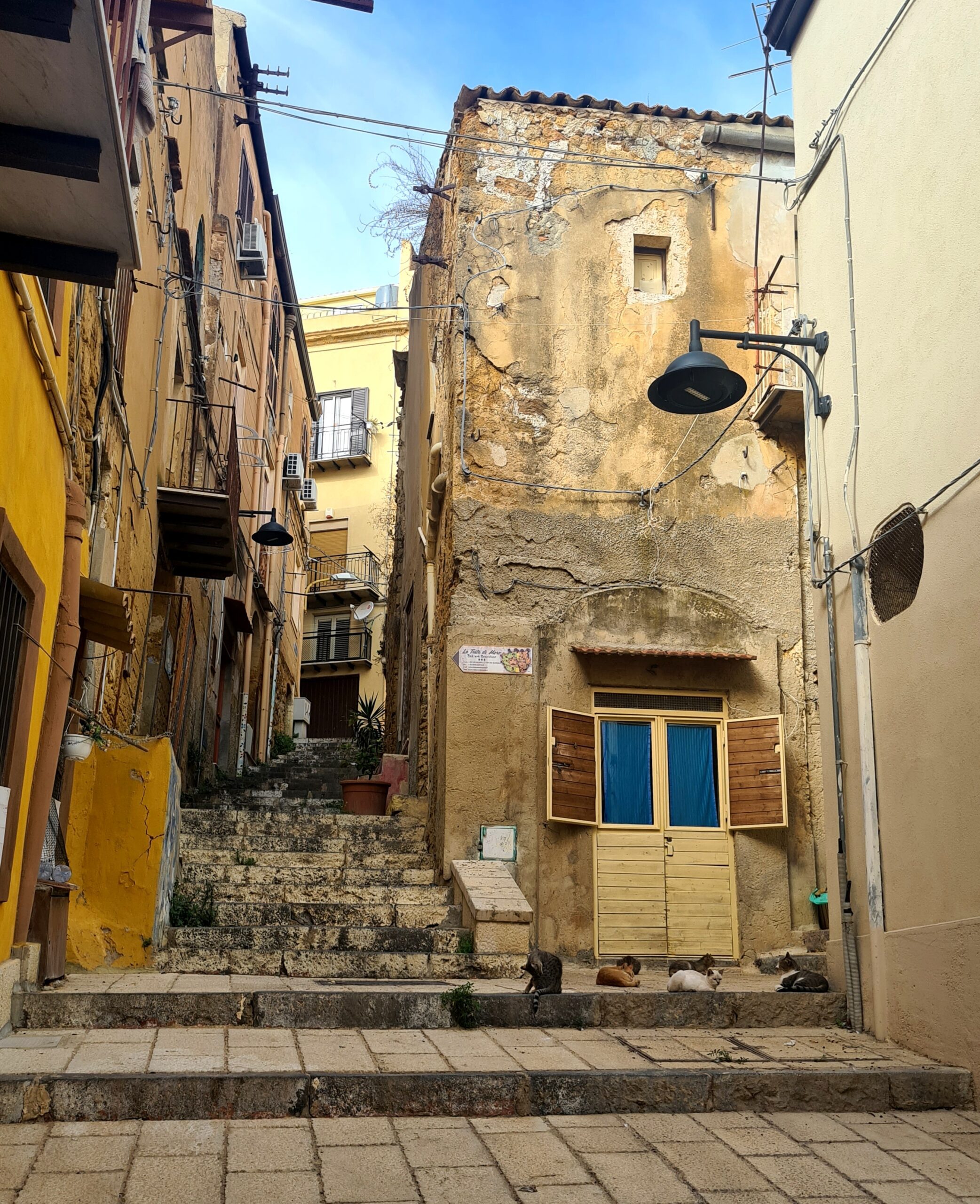
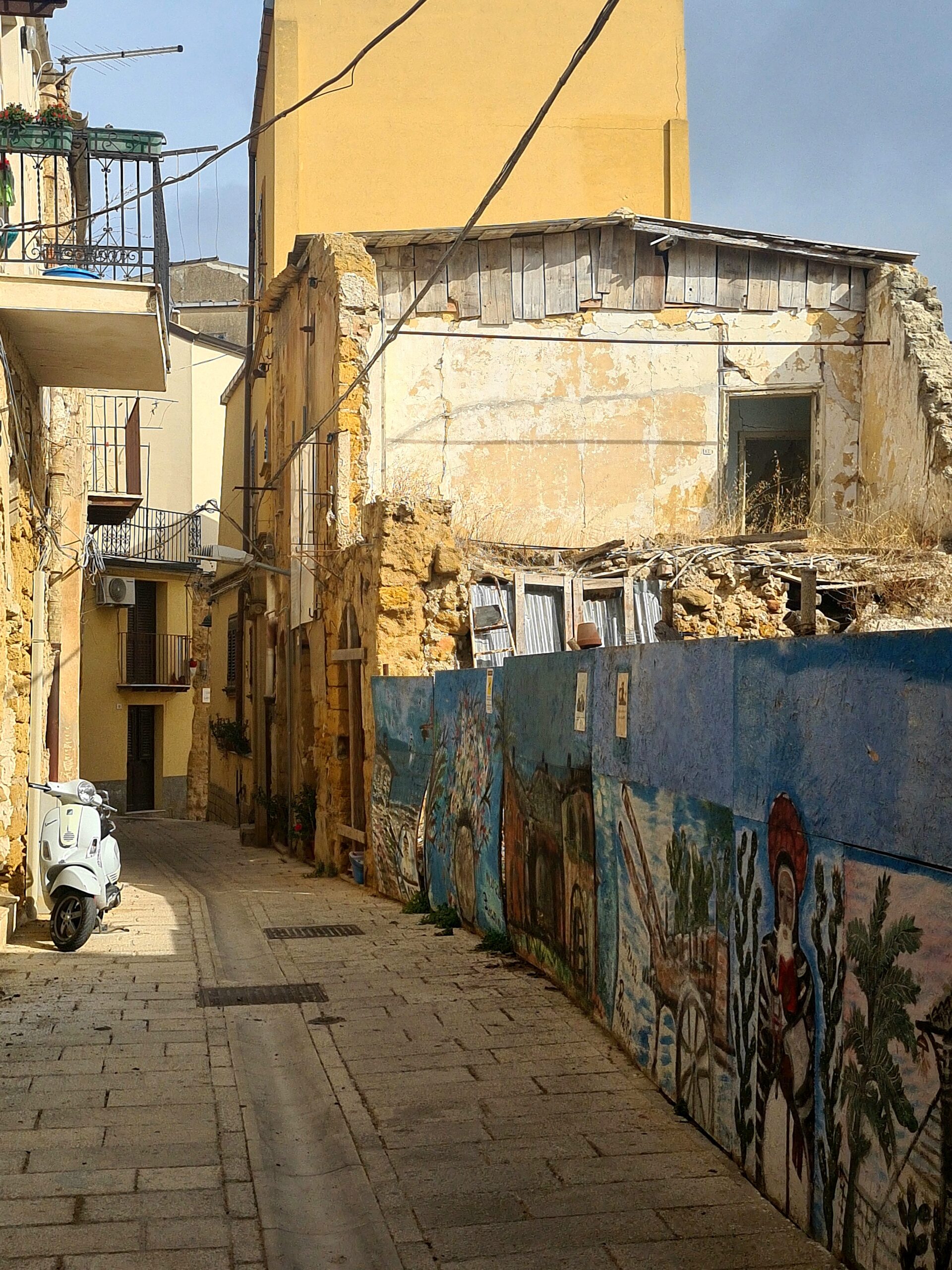
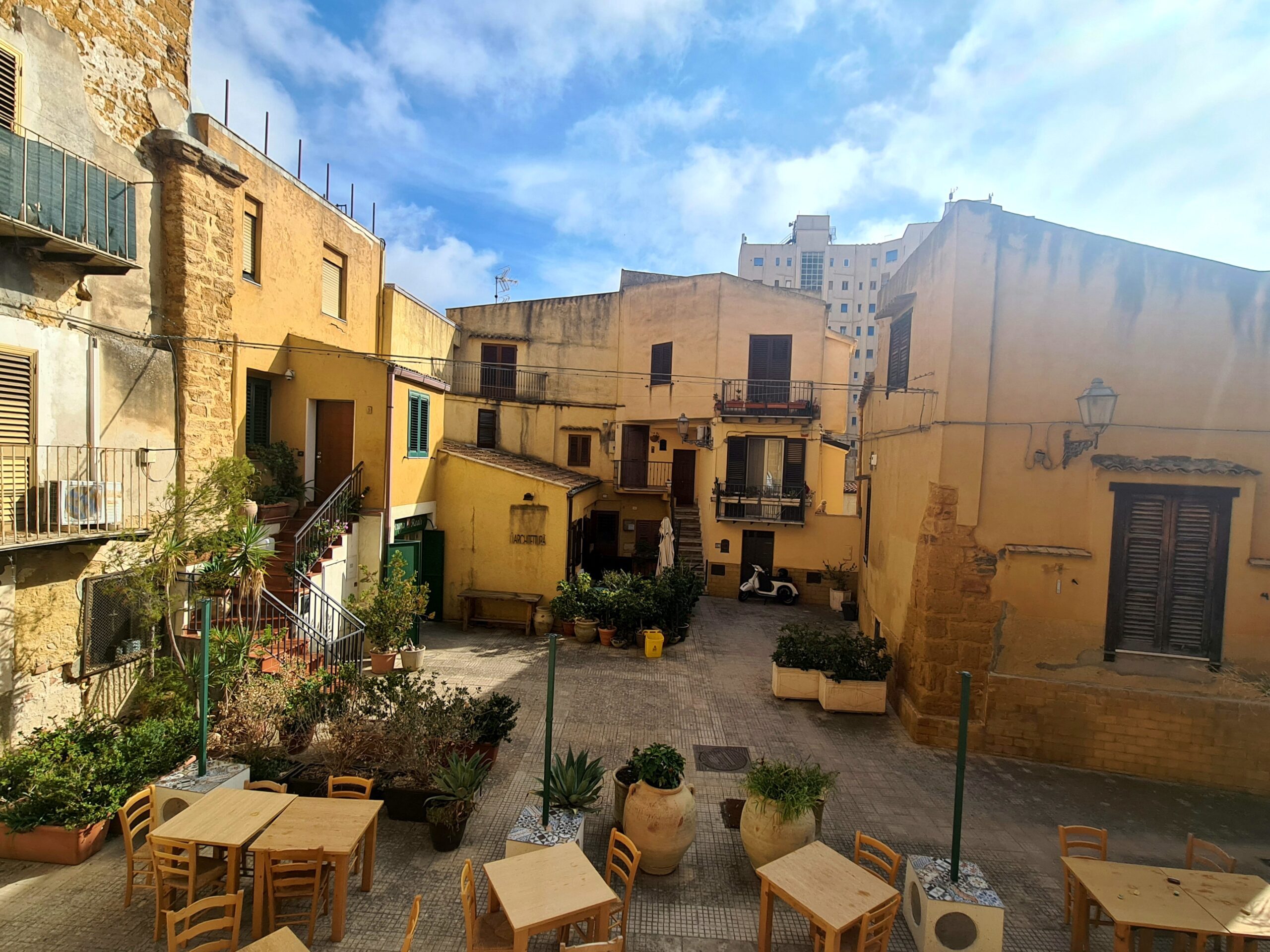
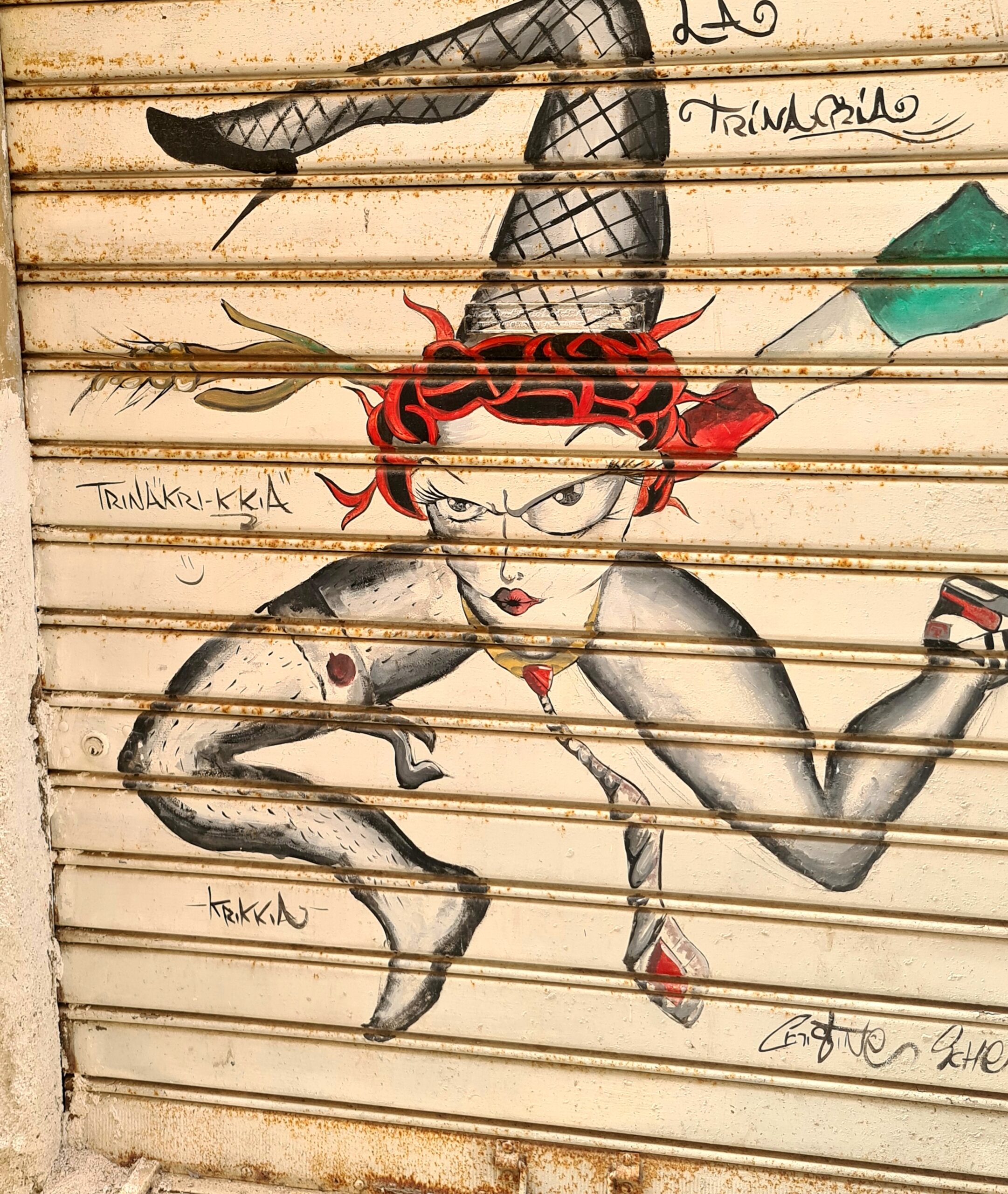
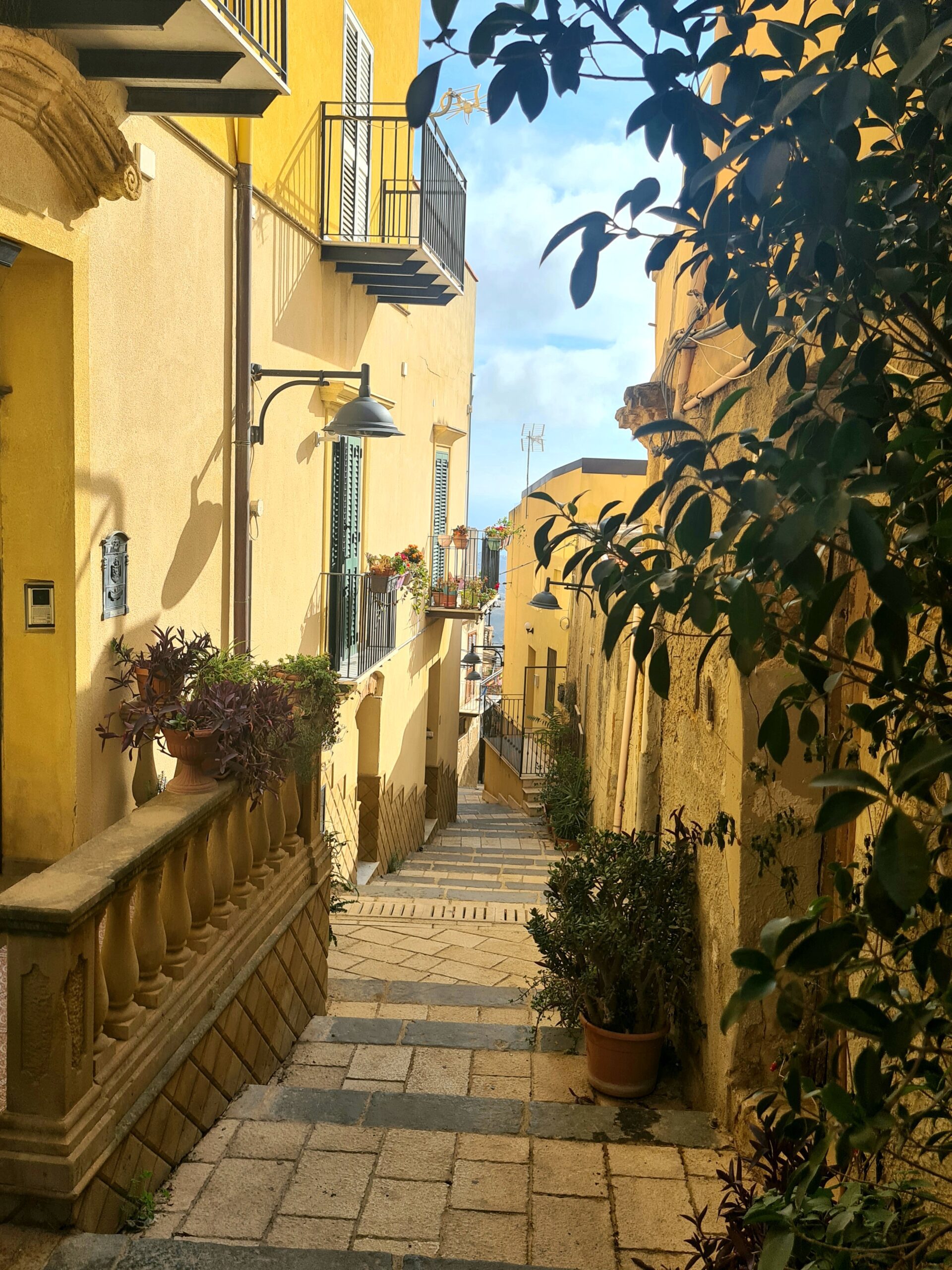

I even stumbled across a beautiful cathedral overlooking the coast where a wedding was taking place. What a gorgeous scene, like something from a movie.
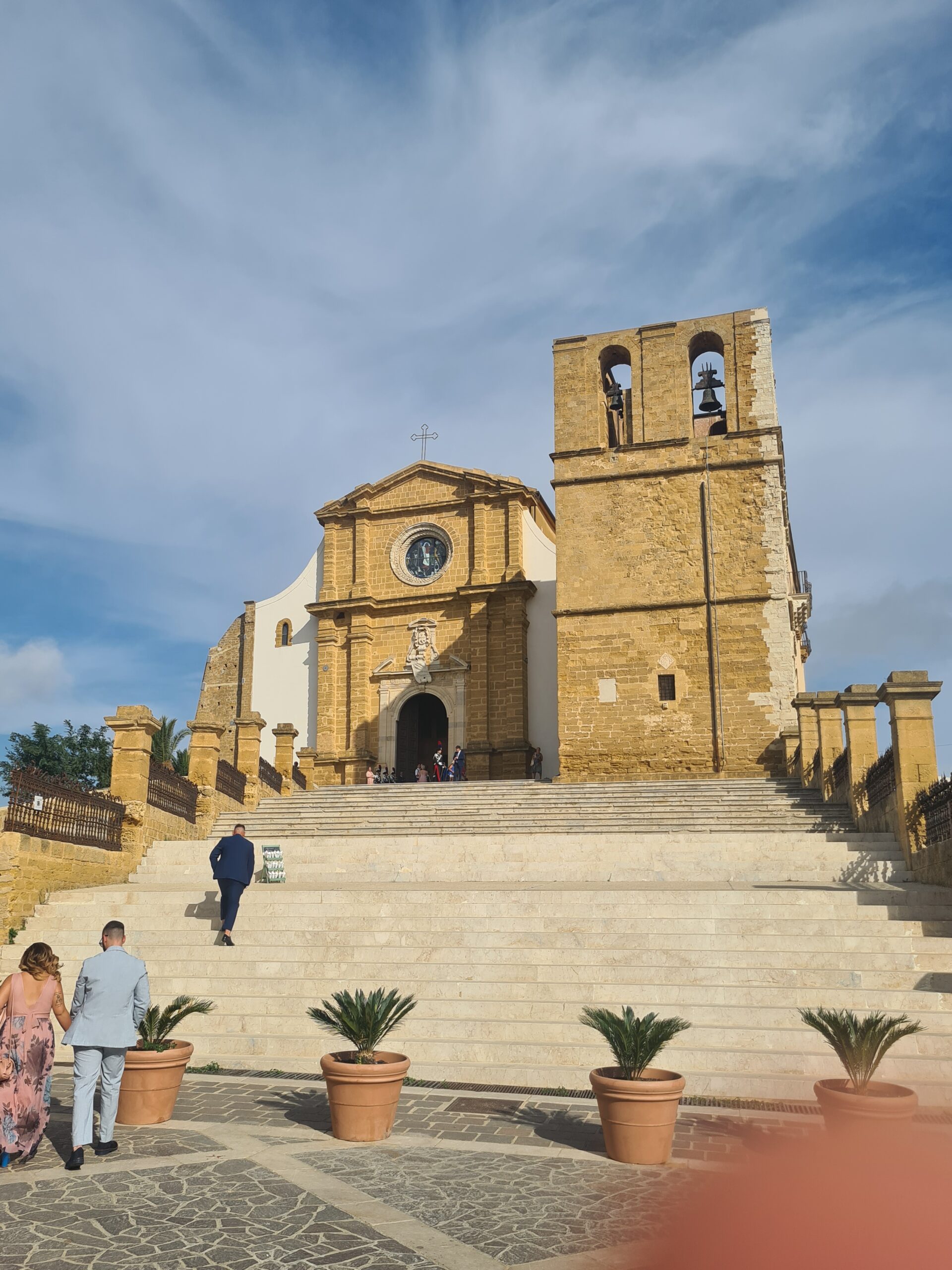
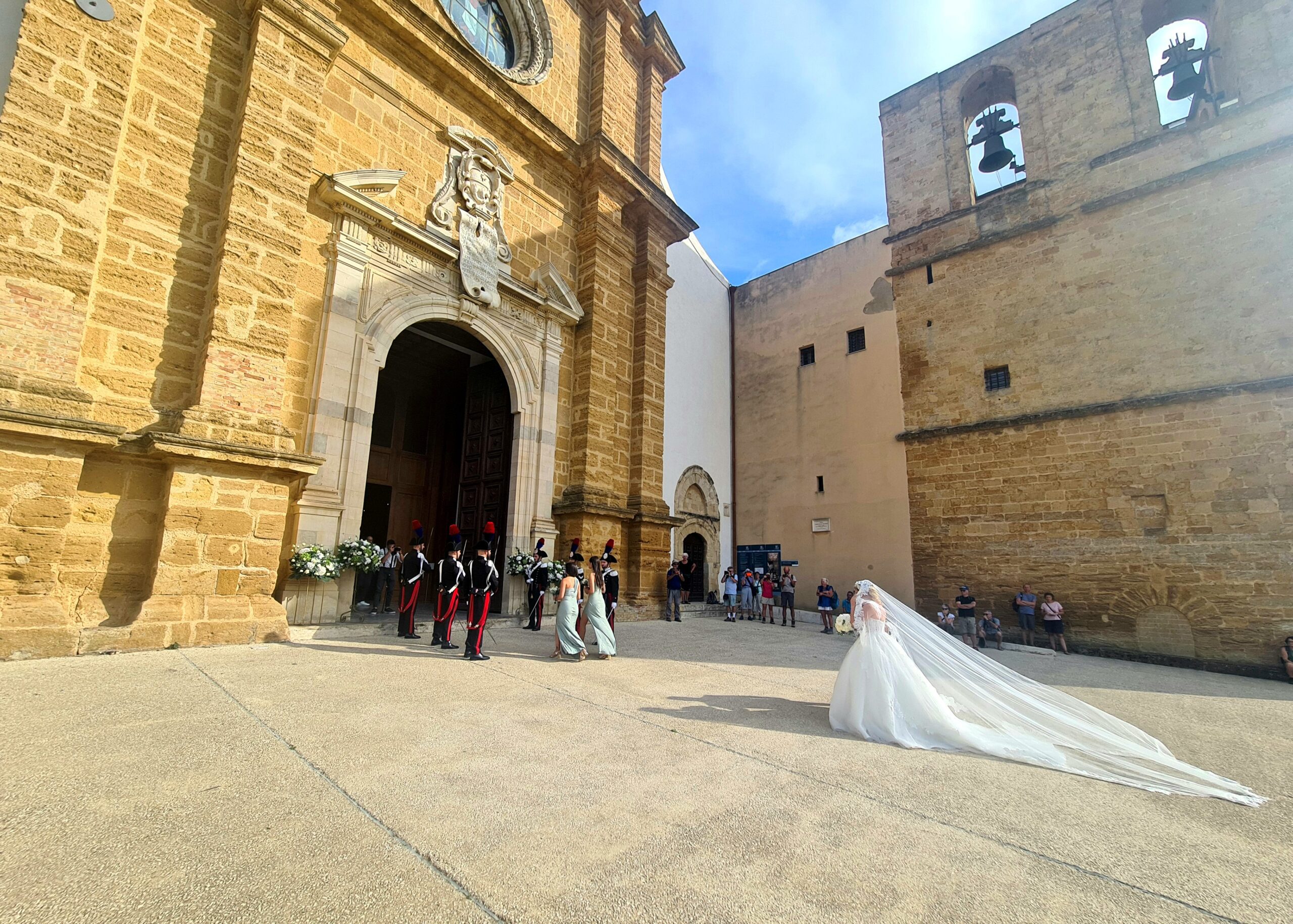
Agrigento is one of those typical little Italian towns where everything shuts and locals go home for the afternoon siesta. It turns into a ghost town, and you need to be prepared so as not to get caught out needing something to eat or drink during that time of the day (like we did.) Luckily, after some searching, we found a little deli that sold vegetables, bread, salami and some drinks. The owner only spoke Italian, but we were able to get what we needed, went back to our room and watched Netflix with our own little antipasti platter (oh my God, the best tomatoes!) crusty bread and an afternoon tipple of wine while everyone else was most likely having a snooze.
But the town magically lights up again at night, shops open and everyone is out again at restaurants and just walking around being social. Unlike the more well-known towns, this place still exudes a quietness, you can sense you are amongst the locals. Restaurants are quaint like this one below. There’s no fanfare here, but there is something quite endearing about the place.
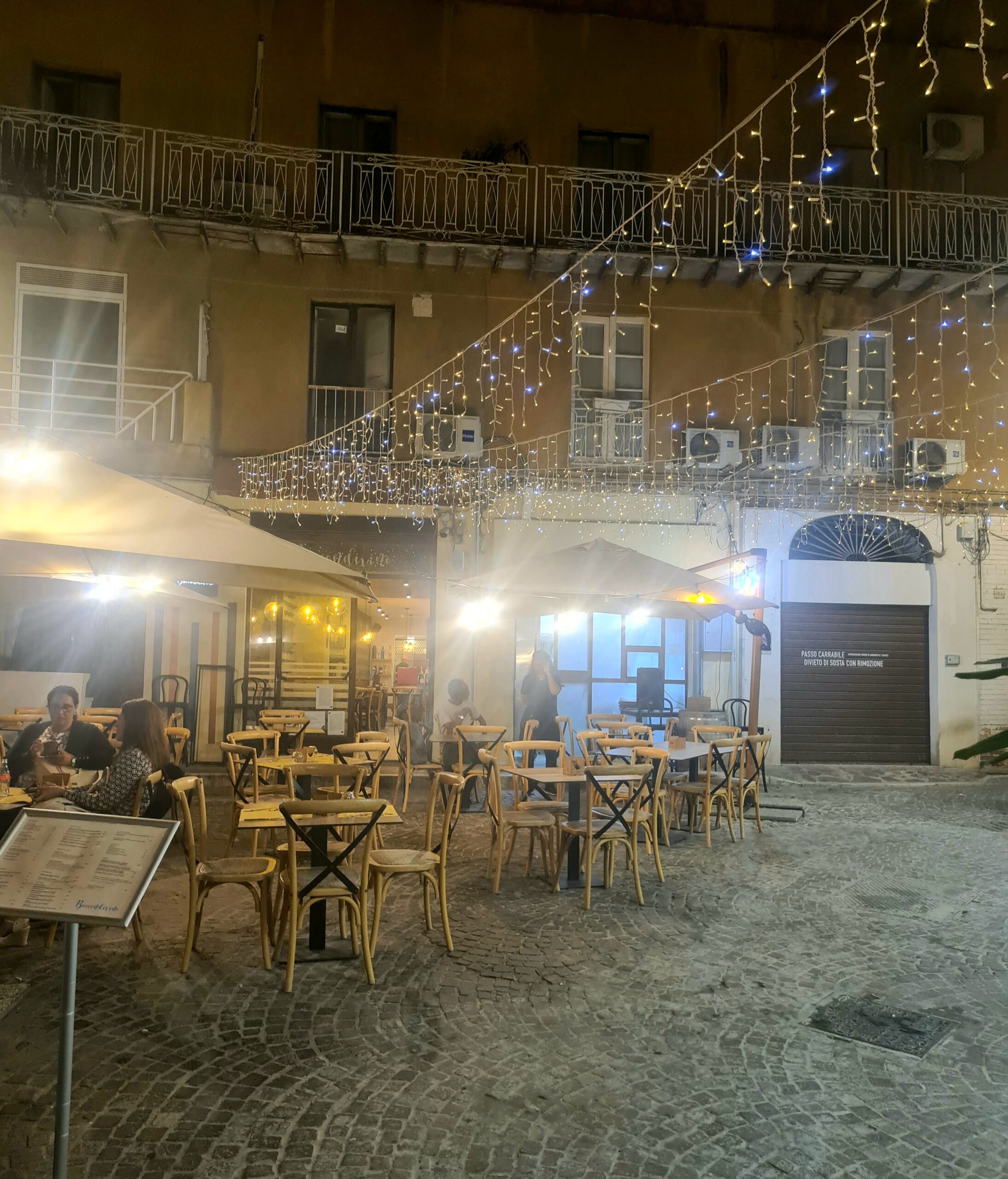
It’s not all historic and quaint, mind you, I did manage to find this bar:

Contrary to what you might think, this is actually a Gelato bar. Pretty clever marketing if you ask me… this place was well served as a photo opportunity and sold many a gelato. Hey, whatever works to get the customers in the door!
I had researched restaurants to go to, and there are even some Michelin star restaurants here, but we were happy to just walk the streets and stumble into places that had lots of people (usually a good indication the food is good – as long as they’re not loaded with tourists). We mainly ate pizzas and simple pasta dishes – I find when you order simple fare you are most likely going to get great food every time. Oh, and in Sicily, you can get by just eating arancini every day (the best!). I can’t recall any restaurants by name, but I do remember the liveliness of sitting at an outside table, watching people walk by, music filling the streets dotted with a multitude of fairy lights. People were out with their children and dogs, talking and laughing, and there was a sense of community as people greeted each other as they walked by. These nights out are the most memorable aspects of an Italian holiday for me. It is why I refuse to base myself in one place and day trip, I like experiencing each little town’s unique atmosphere, especially when the sun goes down.
Sicily is such a beautiful place, so much bigger than you think. When I started putting our itinerary together, it dawned on me I couldn’t see it all on one trip. Sicily needs months to see properly, the towns are so diverse, there is so much history and the food, well the food is AH-MAAAZING. If you are thinking of a trip to Italy, think a little further than the main spots. Yes, we all need to see Rome, Florence and Venice – but Italy is so much more, and these little towns, away from the hordes of tourists, give the best experiences.



Leave a Reply